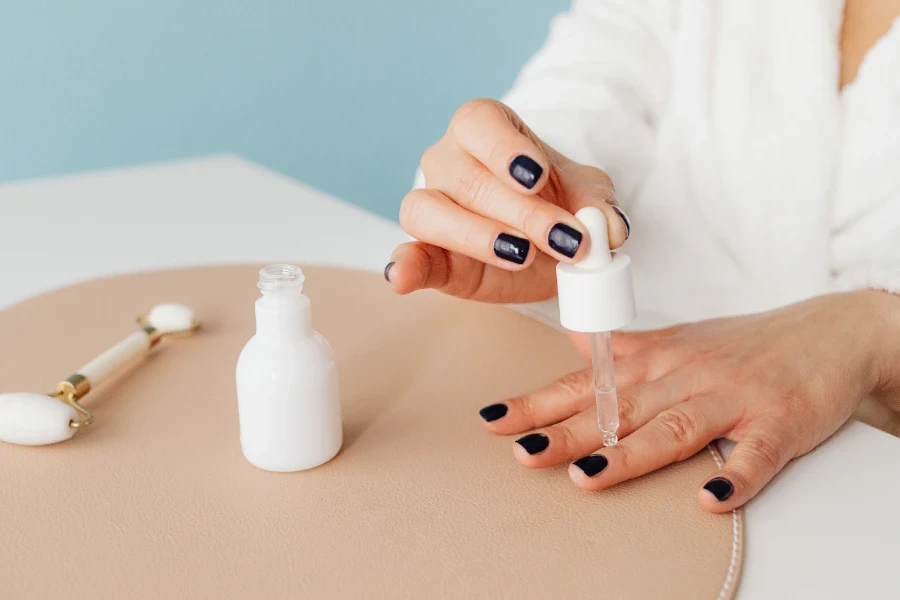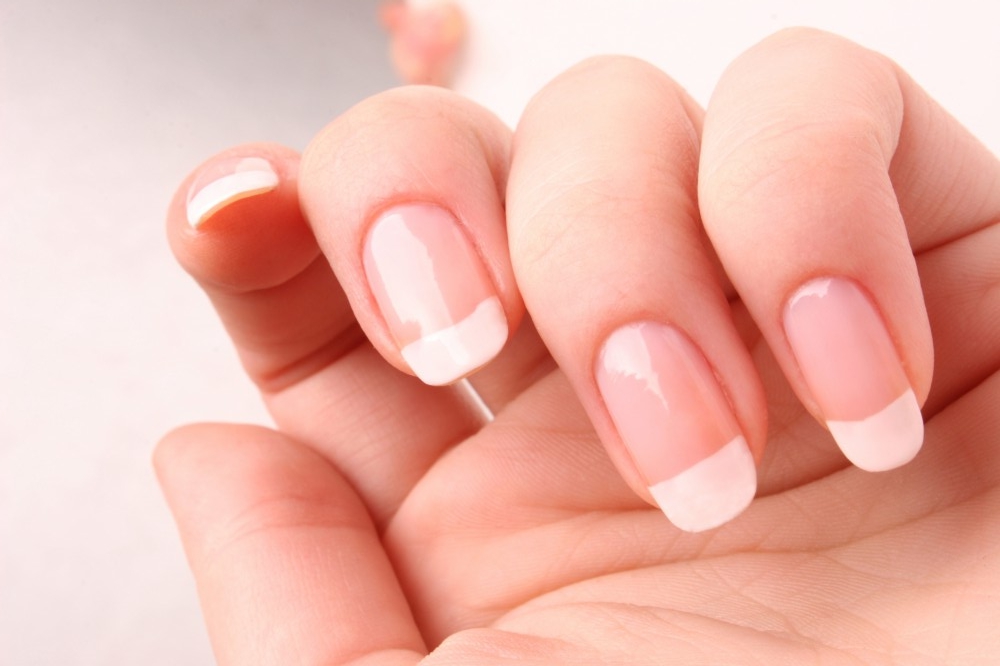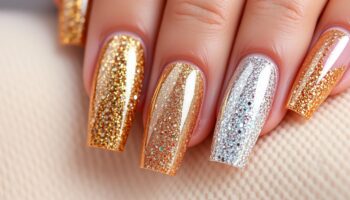Essential Nail Care Tips for Healthy and Beautiful Nails
Compartilhe agora mesmo:
Nail care might seem like a tiny detail in the grand scheme of things, but trust me, it makes a big difference. Whether you’re all about that natural look or love a good splash of color, keeping your nails in tip-top shape is key. It’s not just about looking good—healthy nails are a sign that you’re taking care of yourself. In this article, we’re diving into some super doable nail care tips to help you keep those nails healthy and gorgeous.

Key Takeaways
- Clean and dry nails are your best friends. Moisture can lead to bacteria and fungus, so keep them dry.
- Regular trimming and shaping prevent snags and breakage. Keep them neat and tidy.
- Moisturize your cuticles to keep them soft and healthy. Dry cuticles can lead to problems.
- Avoid harsh chemicals that can damage your nails. Go for gentler options whenever you can.
- Your diet and habits play a big role in nail health. Eat well and avoid biting your nails.
Understanding the Basics of Nail Care
Importance of Clean and Dry Nails
Keeping your nails clean and dry is like the golden rule of nail care. It’s the first step to keeping bacteria and fungi at bay. Every time you wash your hands, make sure to dry them thoroughly. Moisture can be a breeding ground for unwanted germs. Think about it: if you leave your nails damp, you’re basically inviting trouble.
Proper Nail Trimming and Shaping
Trimming your nails regularly is not just about looks; it’s about health, too. Use a sharp, clean nail clipper and cut your nails straight across. This helps prevent ingrown nails. After trimming, gently file the edges to smooth out any rough spots. Shaping nails can be a bit tricky, but rounding them slightly can prevent snags and tears.
Moisturizing Cuticles for Nail Health
Your cuticles are like little shields for your nail beds. If they get dry or cracked, it can lead to infections or nail issues. Regularly applying a nourishing cuticle oil or cream can keep them hydrated. Keeping nails and cuticles hydrated is especially important between manicures to prevent issues like chipping and splitting.
Taking care of your nails isn’t just about appearance; it’s about maintaining their health and strength. By following these basic steps, you’re setting a strong foundation for beautiful nails.
Advanced Nail Care Techniques
Using Nail Strengtheners
If you’re dealing with nails that break easily, a nail strengthener might be your new best friend. These products are like a protective shield for your nails, often packed with ingredients like calcium and vitamins to boost resilience. Think of them as a power-up for your nails. Regular use can help maintain nail integrity and reduce the likelihood of cracks or splits.
Choosing the Right Nail Polish
Nail polish isn’t just about color; it’s about keeping your nails happy and healthy too. Opt for polishes that are free from harsh chemicals like formaldehyde and toluene. These nasties can dry out your nails and lead to brittleness. Look for breathable formulas that let your nails “breathe,” so they don’t get suffocated under layers of polish.
Exploring Nail Treatments
Treatments like manicures aren’t just a luxury—they’re a chance to give your nails some TLC. Whether it’s a hydrating mask or a strengthening serum, these treatments can rejuvenate your nails and cuticles. Consider incorporating treatments to promote nail growth and strengthen nails into your routine to keep them looking their best. A little pampering goes a long way in maintaining nail health.
Maintaining Nail Health Through Lifestyle

Impact of Diet on Nail Health
Your nails are made of a protein called keratin, so what you eat can really affect how they look. If you’re munching on foods rich in vitamins and minerals, like veggies, nuts, and lean meats, your nails are gonna thank you. Protein-rich foods like beans and fish are especially good for nail growth. And don’t forget about supplements—biotin and Vitamin E can be a game-changer for some people.
Avoiding Harmful Habits
Biting your nails or picking at your cuticles is more than just a bad habit; it can actually harm your nails and the skin around them. Try to keep your nails trimmed and clean to avoid the temptation. Also, remember not to use your nails as tools for opening cans or anything else. It might seem convenient, but it can lead to breakage.
Hydration and Its Benefits
Staying hydrated is not only good for your skin but also for your nails. When your body is well-hydrated, your nails are less likely to become brittle and dry. Make sure you’re drinking enough water throughout the day to keep everything, including your nails, in tip-top shape.
Remember: Your lifestyle choices play a big role in how healthy your nails are. From what you eat to how you handle your nails, each decision counts.
For more on keeping your nails and surrounding skin in great condition, consider moisturizing cuticles regularly to maintain hydration.
Protecting Your Nails from Damage
Wearing Gloves for Protection
Take a moment to think about all the stuff your hands go through every day. From washing dishes to cleaning the house, your hands face a lot. Wearing gloves can be a game-changer. Not only do they keep your hands dry, but they also protect your nails from harsh chemicals and water. When you’re doing chores, grab a pair of rubber or vinyl gloves. This simple step can prevent your nails from becoming weak and brittle.
Avoiding Harsh Chemicals
Chemicals are everywhere, and they can be really tough on your nails. Nail polish removers with acetone or cleaning products with strong ingredients can strip your nails of their natural oils. It’s a good idea to switch to acetone-free removers and gentle cleaners. Your nails will thank you for it. If you can, always opt for products that are labeled as nail-friendly or natural.
Proper Use of Nail Tools
Using the right tools the right way can make a huge difference. Make sure your nail clippers and files are clean and sharp. Cut nails straight rather than too short or curved to avoid any unnecessary damage. When pushing back cuticles, do it gently with a wooden stick, not metal tools. This helps in maintaining the integrity of your nails and prevents any accidental injuries.
Taking care of your nails isn’t just about looking good; it’s about keeping them healthy. Small changes, like using gloves and choosing the right products, can make a big difference in nail health over time. Remember, your nails are a reflection of your overall health, so treat them well.
Signs of Healthy and Unhealthy Nails

Healthy nails can tell you a lot about your overall health. Smooth nails with a consistent color are usually a good sign. You might notice a light pinkish hue on the nail plate, which is normal. The cuticles should be intact, and you shouldn’t see any spots or grooves. Occasionally, you might spot some vertical ridges, but don’t worry; they’re harmless and often come with age.
- Nail plates are a pinkish-white color.
- Cuticles are intact and not cut.
- Nails and white tips are even in length.
- A half-moon shaped section, called the lunula, is visible at the nail base.
Unhealthy nails can show up in a few different ways. If your nails are peeling or splitting, it might mean they’re dry or you’re missing some vitamins. White spots can pop up if you bite your nails or paint them too often. Horizontal grooves might appear if you’re stressed or have had a fever. If you notice spoon-shaped nails, it could be a sign of iron deficiency or anemia.
- Peeling or splitting nails could indicate dryness or a vitamin deficiency.
- Tiny white spots usually result from nail biting or frequent painting.
- Horizontal grooves might be linked to stress or physical trauma.
- Red, swollen skin around nails might be due to cuticle biting or removal.
- Spoon-shaped nails could suggest iron deficiency or anemia.
Sometimes, nail changes are more than just cosmetic concerns. If you notice any of the following, it might be time to see a dermatologist:
- Changes in color, like a dark streak under the nail.
- Changes in shape, such as curling.
- Nails becoming thinner or thicker.
- Dents or grooves in the nails.
- Nails pulling away from the surrounding skin.
- Bleeding, swelling, or persistent pain around the nails.
If you spot any of these symptoms, it’s best to have them checked out. Your nails can give you clues about your health, so it’s important to pay attention.
Creating an At-Home Nail Care Routine
Essential Tools for Nail Care
To get started with your at-home nail care routine, you’ll need the right tools. Here’s a basic list:
- Nail clippers: Essential for trimming your nails to the desired length.
- Nail file: Helps in shaping and smoothing the edges of your nails.
- Cuticle pusher: Useful for gently pushing back the cuticles.
- Nail buffer: Gives your nails a shiny, polished look.
- Moisturizing cuticle oil: Keeps your cuticles hydrated and healthy.
Having these tools on hand makes it easier to maintain your nails and prevent issues like breakage and peeling. For more top tips on preventing nails from breaking, check out our comprehensive guide.
Steps for a DIY Manicure
Creating a salon-quality manicure at home is simpler than you might think. Just follow these steps:
- Start with clean, dry nails: Wash your hands and remove any old nail polish.
- Trim and file: Use your clippers to trim your nails to the desired length, then shape them with a nail file.
- Soak and push: Soak your fingers in warm water to soften the cuticles, then gently push them back with a cuticle pusher.
- Buff and polish: Buff your nails to smooth out any ridges, then apply a base coat, your favorite nail polish, and a top coat for protection.
- Moisturize: Finish with cuticle oil or a hand cream to keep your nails and skin hydrated.
Incorporating Nail Care Products
Integrating quality nail care products into your routine can make a big difference. Consider these options:
- Nail strengtheners: These can help reinforce weak nails and prevent them from splitting.
- Ridge fillers: Perfect for smoothing out uneven surfaces on your nails.
- Overnight serums: Hydrate and nourish your nails while you sleep.
Taking care of your nails at home isn’t just about aesthetics; it’s a part of your overall wellness routine. A little love and attention can go a long way in keeping your nails looking their best.
Nail Care Tips for Different Seasons
Winter Nail Care Strategies
Winter can be harsh on your nails, making them dry and brittle. Here are some tips to keep them healthy:
- Moisturize Regularly: Cold weather can dry out your nails and cuticles. Use a rich hand cream and apply cuticle oil to maintain moisture.
- Wear Gloves: Always wear gloves when you’re outside to protect your hands from the cold and wind.
- Avoid Hot Water: Hot water can strip moisture from your nails. Use lukewarm water instead when washing your hands.
Keeping your nails hydrated during winter is crucial to prevent them from becoming brittle and breaking easily.
Summer Nail Protection Tips
Summer brings its own set of challenges for nail care. Here’s how to protect your nails:
- Use Sunscreen: Apply a broad-spectrum sunscreen on your nails and hands to prevent sun damage.
- Stay Hydrated: Drink plenty of water to keep your nails and skin hydrated from within.
- Limit Chlorine Exposure: If you swim often, rinse your hands and nails with fresh water after swimming to avoid chlorine damage.
Adapting to Seasonal Changes
Adapting your nail care routine to the changing seasons is essential for maintaining nail health:
- Adjust Moisturizers: Use heavier creams in winter and lighter lotions in summer.
- Change Nail Polish Formulas: Opt for hydrating formulas in winter and breathable ones in summer.
- Regular Maintenance: Regardless of the season, keep up with regular trimming and filing to prevent snags and breaks.
Conclusion
So, there you have it! Nail care isn’t just about looking good; it’s about keeping your nails healthy and strong. By sticking to a simple routine—keeping them clean, trimmed, and moisturized—you can avoid a lot of common nail problems. Remember, your nails are a reflection of your overall health, so treat them well. Whether you’re into fancy nail art or prefer a natural look, taking care of your nails is always in style. Give your nails the love they deserve, and they’ll thank you by looking fabulous every day.
Frequently Asked Questions
How do I keep my nails clean and dry?
To keep your nails clean, wash your hands with soap and water regularly. Make sure you dry them well to stop germs and fungus from growing.
What is the best way to trim and shape my nails?
Trim your nails straight across using clean clippers, then gently shape the edges with a nail file to prevent snags.
Why is it important to moisturize my cuticles?
Moisturizing your cuticles helps protect the nail bed and keeps your nails growing strong and healthy.
How can I protect my nails from harsh chemicals?
Avoid using strong chemicals like acetone-based polish removers. Wear gloves when using cleaning products to protect your nails.
What should I look for in a nail polish?
Choose nail polishes that are free from harmful chemicals like formaldehyde and toluene to keep your nails healthy.
When should I see a dermatologist about my nails?
If your nails change color, swell, or cause pain, it’s a good idea to see a dermatologist for advice.






Seja o primeiro a comentar!